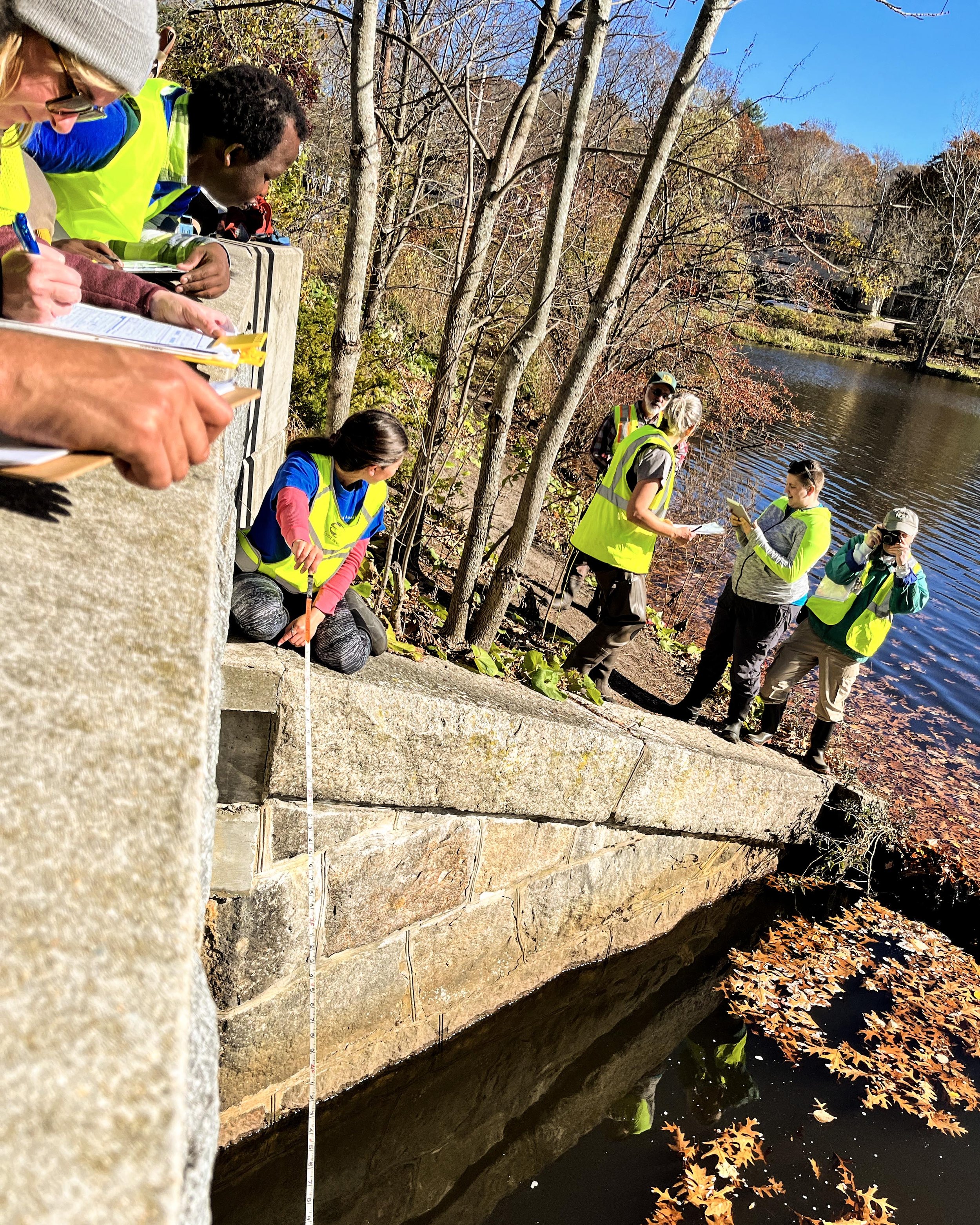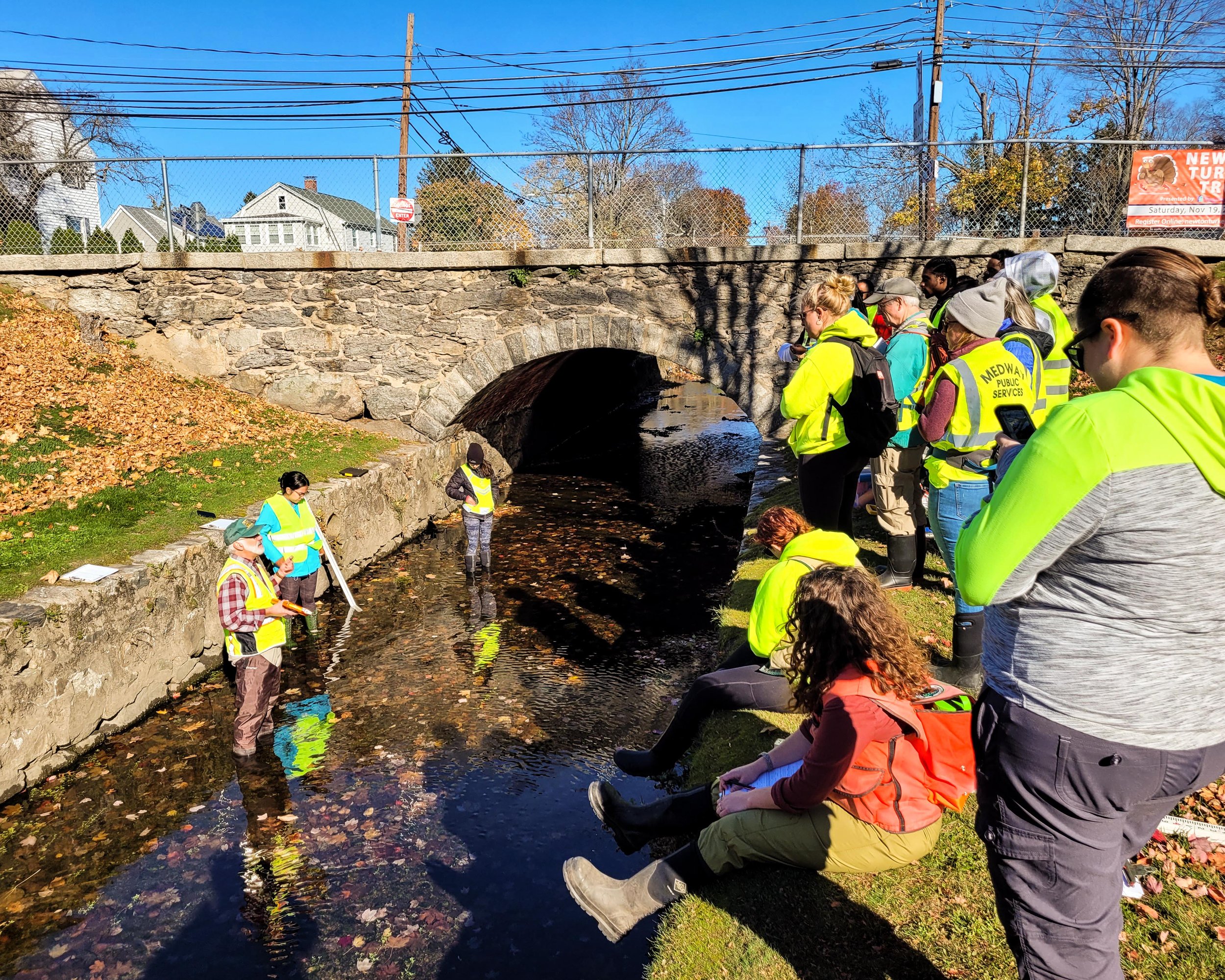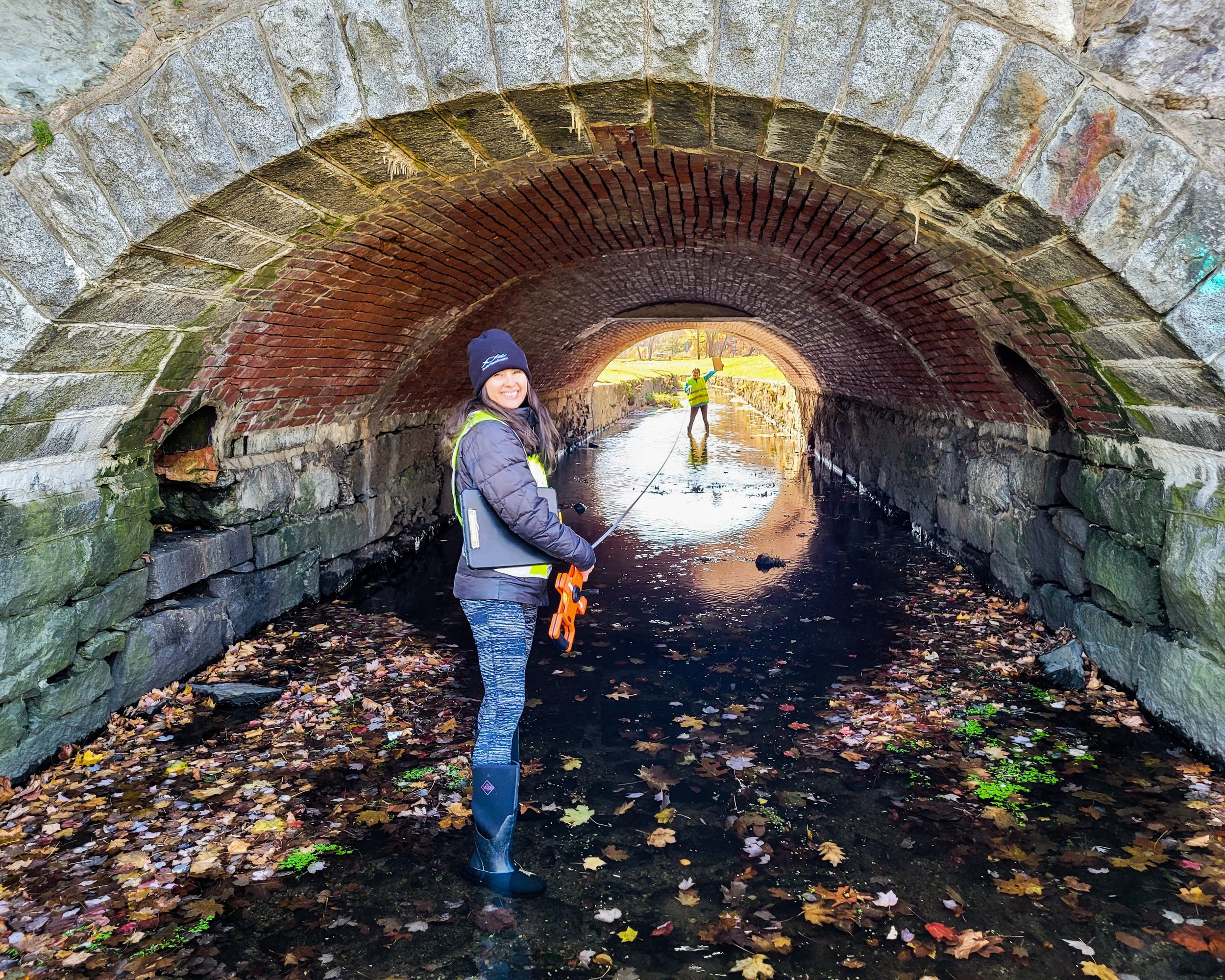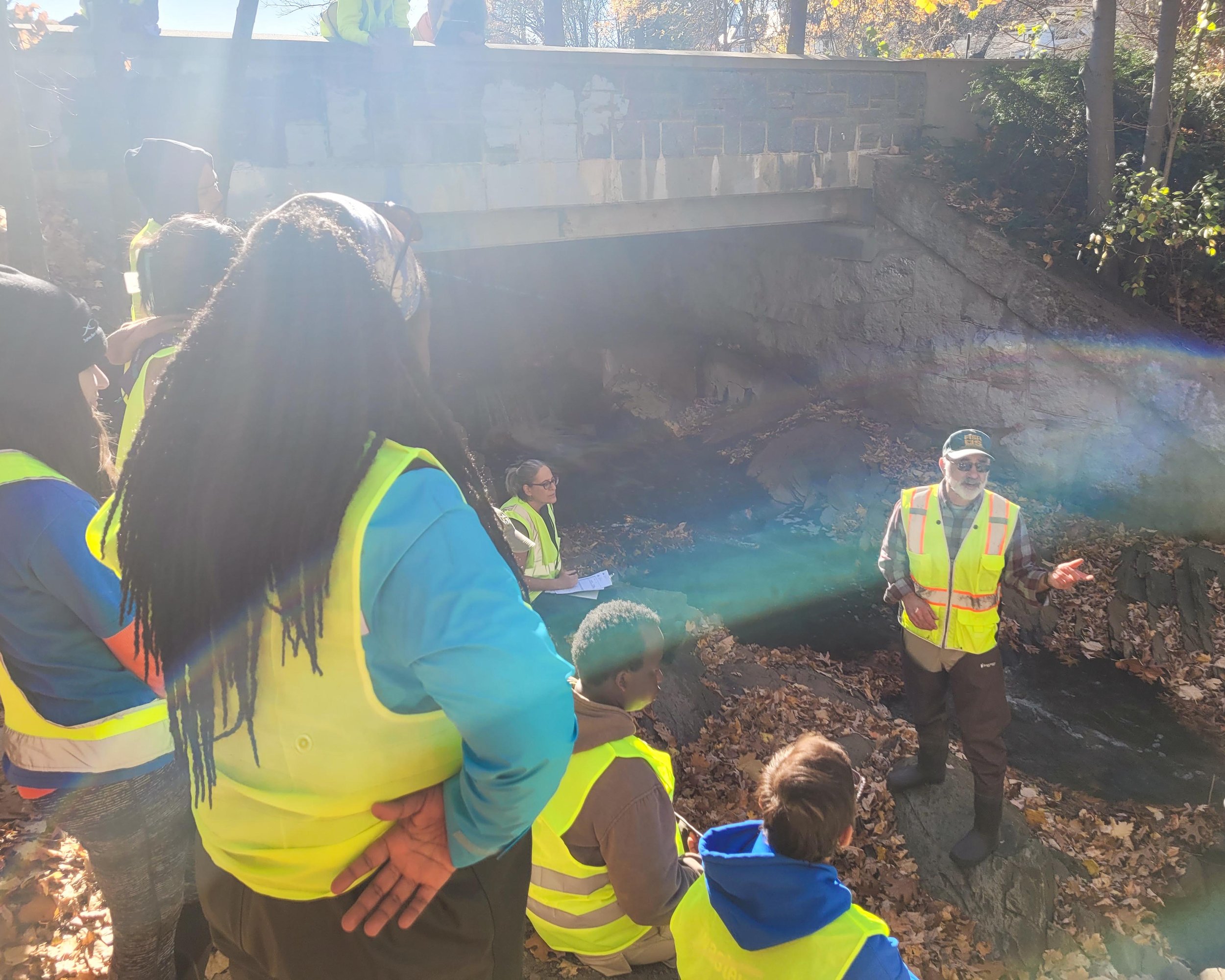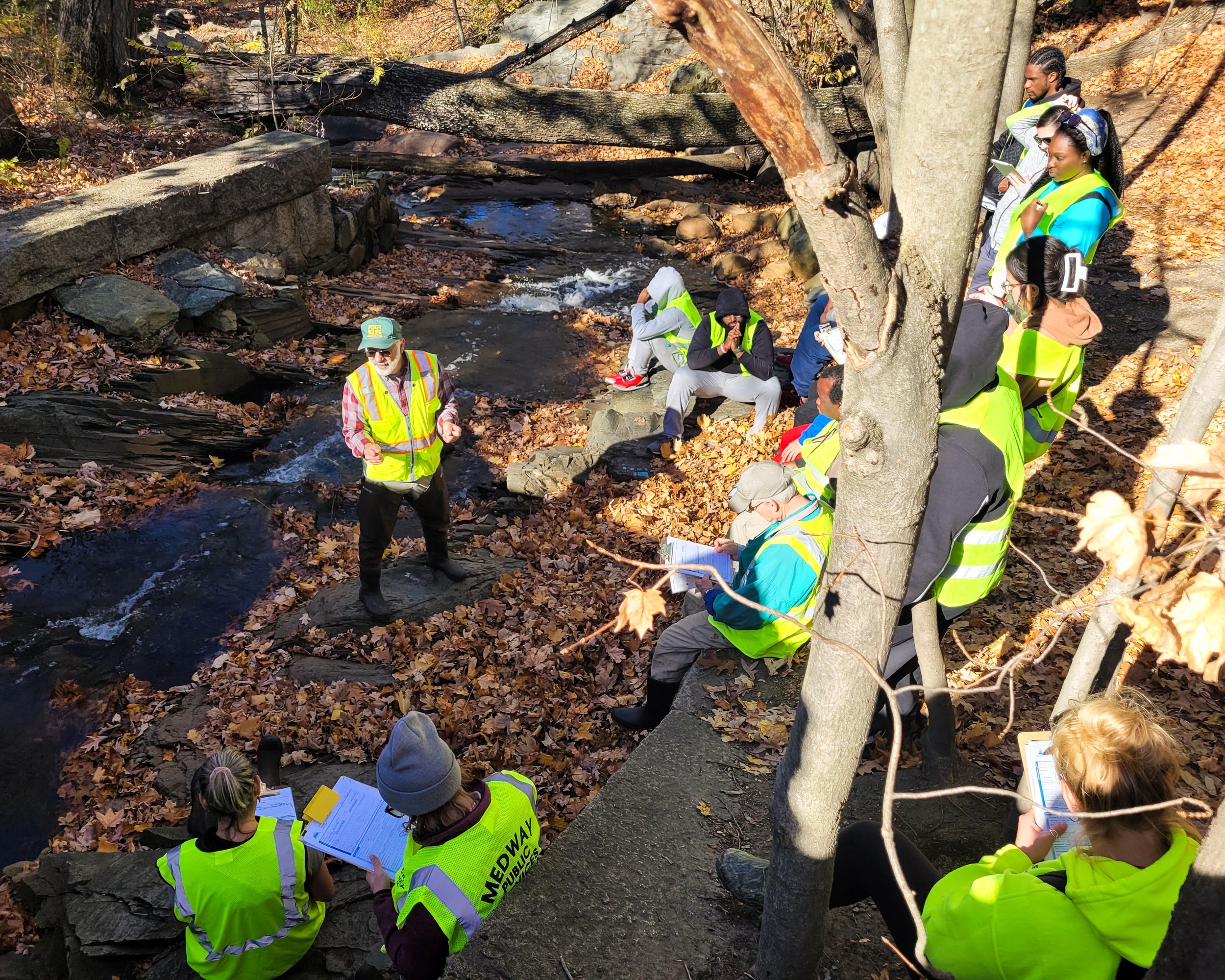Consider the Culverts
Our unseen, often overlooked climate solutions.
CULVERT TRAINING Scott Jackson of the University of Massachusetts trains municipal staff, students from X-Cel Conservation Corp, and CRWA staff on the North Atlantic Aquatic Connectivity Collaborative (NAACC) protocol for culvert assessments.
Planting trees, conserving water, transitioning to renewable energy…and culverts? When we talk about climate solutions, culverts are rarely at the top of anyone's list.
As Governor Baker put it, culverts "are not sexy" and "don't generate a heck of a lot of votes.”
But, these little-known, often overlooked features of our built environment can actually play a huge role in our watershed’s resilience to climate change.
So what are culverts, really?
Culverts are the structures that allow rivers and streams to pass beneath roadways, and if well designed and maintained provide vital habitat connectivity for aquatic life.
Across our watershed, thousands of culverts dot our cities and towns, and many are poorly maintained, damaged, undersized, and completely unequipped to deal with the impacts of increased precipitation. And, if they fail, culverts have the potential to wash out roads, flood our neighborhoods, and risk public safety.
We often have little idea about their condition––culverts are so numerous that many already block fish passage, are clogged with debris, and are on the brink of failure––yet they remain unnoticed until big storms and flooding.
We’re training an expert team to check in on culverts.
That’s where the North Atlantic Aquatic Connectivity Collaborative (NAACC) culvert assessment protocol comes in.
With Scott Jackson of the University of Massachusetts, we trained over twenty municipal staff from Franklin, Medway, Sherborn, Wellesley, and Natick, students from X-Cel Conservation Corp, and CRWA staff to collect data to better understand aquatic connectivity and future flooding impacts.
"Learning how to assess a culvert was an empowering experience. These critical pieces of infrastructure are being asked to do a lot, and are not cared for as they should be. With this assessment tool, we can better understand how well our streams are connected, and where to prioritize our efforts to replace or repair old infrastructure," says River Science and Restoration Program Manager Lisa Kumpf.
Together, the data the team collects will allow us to prioritize restoration and flood mitigation benefits to build climate resilience, as well as contribute to a multi-state database to help researchers understand how fish and other aquatic animals migrate throughout the East Coast.
"This is an exciting opportunity to connect with and help cities and towns identify and prioritize work to replace culverts to improve flooding and fish and wildlife passage," said Climate Resilience Specialist Robert Kearns.
“Ensuring the continuity of waterways is vital for aquatic life,” said Rita Barron Fellow Sarah Traoré.



